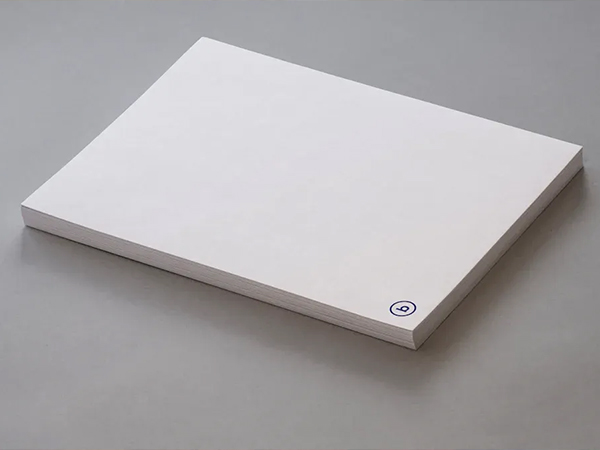
AKD and ASA sizing agents play a vital role in modern papermaking by making paper more hydrophobic. These agents form protective barriers on fibers, which prevent water from penetrating the paper. As a result, paper treated with AKD and ASA Sizing Agents achieves superior water resistance, durability, and printability. Strong sized papers resist liquid absorption, maintain a smooth surface, and provide a reliable base for printing, making them ideal for a wide range of uses.
Key Takeaways
- AKD and ASA sizing agents create a water-repellent layer on paper fibers, improving water resistance, durability, and print quality.
- AKD reacts slowly and needs curing, offering long-term water resistance and flexibility in application, while ASA reacts quickly for immediate sizing but requires prompt use.
- Proper emulsification and pH control are essential for effective sizing; AKD emulsions last longer, whereas ASA emulsions must be used quickly to avoid loss of performance.
- Using AKD and ASA sizing agents helps prevent ink bleeding and feathering, resulting in sharper prints and stable paper dimensions under humidity.
- The papermaking industry is moving toward sustainable, bio-based sizing agents, with innovations improving environmental impact and process efficiency.
AKD and ASA Sizing Agents Overview

Chemical Properties
AKD and ASA Sizing Agents serve as internal sizing agents in modern papermaking. Both chemicals enhance water resistance by forming hydrophobic barriers on cellulose fibers. AKD, or Alkyl Ketene Dimer, contains unsaturated lactones synthesized from fatty acids. It appears as a waxy, milky solid and requires emulsification for use. ASA, or Alkenyl Succinic Anhydride, features a linear unsaturated chain with a reactive five-membered anhydride ring. This structure allows ASA to react quickly with cellulose, forming ester bonds that improve water resistance.
Note: ASA’s anhydride ring gives it high reactivity, but it also hydrolyzes quickly, which can reduce sizing efficiency if not managed properly.
The table below summarizes the main chemical properties:
| Chemical Property | AKD (Alkyl Ketene Dimer) | ASA (Alkenyl Succinic Anhydride) |
|---|---|---|
|
Chemical Structure |
Unsaturated lactones from fatty acids |
Linear chain with reactive anhydride ring |
|
Physical Form |
Waxy, milky solid |
Waxy solid |
|
Neutral to alkaline |
Alkaline (pH 7.5–8.4) |
|
|
Fiber Reaction |
Strong bonding, uniform coverage |
Rapid reaction, improves stability |
|
Functional Benefits |
Water resistance, durability |
Water resistance, dimensional stability |
Application in Papermaking
Papermakers supply AKD and ASA Sizing Agents in emulsified forms to ensure even distribution and effective sizing. AKD is typically emulsified above its melting point using stabilizers like guar gel, which allows for longer storage—up to two months—without losing performance. ASA is supplied as an oil and emulsified on-site with starch-based or polymer-based emulsifiers, producing a fine emulsion with a short shelf life. ASA emulsions must be used promptly to prevent hydrolysis and maintain sizing efficiency.
| Chemical | Supply Form and Handling | Application Details |
|---|---|---|
|
ASA |
Oil, emulsified on-site with starch/polymer emulsifiers; short shelf life |
Dosed immediately at the wet end for uniform distribution |
|
AKD |
Emulsified with stabilizers like guar gel; stable for up to two months |
Used in alkaline papermaking; dosed for optimal sizing |
Papermaking conditions such as pH and temperature influence the performance of both agents. AKD works best in neutral to alkaline environments and requires a curing step after drying. ASA performs optimally in alkaline conditions but needs careful handling to avoid premature hydrolysis.
AMAZON Chemicals stands as a global leader in papermaking chemicals, offering expertise and innovative solutions for mills seeking to optimize the use of AKD and ASA Sizing Agents. For tailored advice or product inquiries, industry professionals can reach out to their technical team.
Mechanisms of Water Resistance

Hydrophobic Layer Formation
AKD and ASA Sizing Agents improve water resistance by forming hydrophobic layers on cellulose fibers. This process involves several physical and chemical steps that transform the paper surface from hydrophilic to hydrophobic.
- AKD begins as a waxy solid that melts at temperatures above 90 °C. The molten AKD spreads across cellulose fibers through surface diffusion and capillary wicking, creating a thin, continuous barrier.
- ASA, supplied as an oily emulsion, rapidly migrates and spreads on the fiber surface before dewatering. Its vapor can condense in small pores, enhancing sizing in areas that are difficult to reach by liquid alone.
- The thickness of the hydrophobic wax coating typically ranges from 5 to 10 μm. Uniformity is critical; uneven or thin coatings result in poor water resistance.
- Multilayer coatings can improve barrier properties but increase weight and cost, making a single, uniform layer preferable for most applications.
- The hydrophobicity of sized paper is confirmed by contact angles greater than 100°, indicating effective water repellency.
Note: Uniform wax impregnation reduces paper porosity and acts as a binder, improving the barrier against water vapor. Emulsion wax coatings may appear uniform but often trap water molecules, leading to inferior water vapor resistance.
The following table highlights key differences in hydrophobic layer formation between AKD and ASA Sizing Agents:
| Aspect | AKD (Alkyl Ketene Dimer) | ASA (Alkenyl Succinic Anhydride) |
|---|---|---|
|
Chemical Reactivity |
Slower esterification; forms hydrophobic ketones and oligomers |
Rapid esterification; immediate water resistance |
|
Physical Form |
Waxy solid emulsion; stable during storage |
Oily monomer emulsion; must be freshly prepared |
|
Hydrophobic Layer Formation |
Slow chemical reaction and non-anchorable ketones |
Quick chemical reaction; vapor-phase sizing possible |
|
Stability and Storage |
Hydrolyzes slowly; stable emulsion |
Rapid hydrolysis; needs stabilizers |
|
Application Flexibility |
Flexible addition; slower reaction |
Requires precise timing and conditions |
Chemical Reactions with Cellulose
The effectiveness of AKD and ASA Sizing Agents depends on their ability to chemically bond with cellulose fibers. Both agents react with the hydroxyl groups present on cellulose, forming covalent ester bonds that anchor the hydrophobic layer to the fiber surface.
- AKD reacts with cellulose via esterification, forming stable covalent bonds. This reaction is most efficient in neutral to weakly alkaline conditions (pH 7.5–9.0) and at curing temperatures between 90 and 110 °C.
- Approximately 40% of AKD reacts directly with cellulose under optimal conditions. The remainder may self-react or hydrolyze, forming hydrophobic ketones that still contribute to water resistance.
- ASA features a highly reactive anhydride ring, enabling rapid esterification with cellulose hydroxyl groups. This fast reaction delivers immediate water resistance, but ASA also hydrolyzes quickly if not applied promptly.
- Redistribution and migration of both AKD and ASA molecules on the fiber surface occur through capillary wicking and surface diffusion. These mechanisms ensure even coverage and maximize the effectiveness of the hydrophobic barrier.
- Uniform coatings enhance adhesion between the wax and paper fibers, further improving water resistance. Nonuniform or excessively thin layers, often caused by reduced wax viscosity or trapped water, result in diminished performance.
Tip: Optimal water resistance is achieved with a thin, uniform hydrophobic layer that balances barrier performance and mechanical strength.
AMAZON Chemicals, as a global leader in papermaking chemicals, provides advanced solutions and technical support for mills seeking to optimize the use of AKD and ASA Sizing Agents. Their experts can help customers achieve superior water resistance and product quality. For further discussion or product inquiries, industry professionals are encouraged to contact the AMAZON Chemicals technical team.
Performance and Benefits
Water Resistance and Durability
Paper treated with AKD and ASA Sizing Agents demonstrates a marked improvement in resistance to liquid water. The hydrophobic surface created by these agents significantly reduces water uptake and swelling, which helps maintain the integrity of paper products in demanding environments. AKD chemically bonds with cellulose fibers, forming β-keto ester linkages that make the paper highly resistant to liquid penetration. This chemical modification prolongs the time required for water vapor to diffuse through the paper, limiting biological degradation and extending product lifespan.
- Enhanced hydrolytic resistance and long-term stability result from advanced AKD emulsions stabilized with laponite and lauric arginate complexes.
- These formulations create a dense interfacial layer and a three-dimensional network, which inhibits oil droplet aggregation and hydrolysis.
- Environmental factors such as pH, temperature, and salinity can affect emulsion stability, but optimized systems provide tunable resistance.
- Cationic starch and polymers improve adhesion, although they may be susceptible to biological degradation over time.
Tip: Paper mills seeking to maximize durability and water resistance should consider advanced AKD formulations. AMAZON Chemicals offers expert guidance and innovative solutions for optimizing sizing agent performance in diverse environments.
Printability and Dimensional Stability
AKD and ASA Sizing Agents play a crucial role in controlling ink absorption and improving print quality. The hydrophobic barrier formed on the fiber surface prevents ink bleeding and feathering, resulting in sharper and clearer prints. AKD enhances mechanical strength and foldability, while ASA provides rapid sizing and effective ink holdout in both acidic and alkaline conditions.
| Benefit | AKD | ASA |
|---|---|---|
|
Ink Absorption |
Reduced, prevents bleeding |
Reduced, rapid sizing |
|
Print Sharpness |
Improved |
Improved |
|
Surface Smoothness |
Enhanced |
Enhanced |
|
Dimensional Stability |
Maintained under humidity |
Maintained under humidity |
Proper curing, pH control, and dosage are essential for optimal performance. Over-sizing may cause surface defects and smearing, while under-sizing leads to poor water resistance and diminished print durability. Mills can achieve superior print quality and dimensional stability by selecting the right sizing agent and application method.
For tailored advice on sizing agent selection and printability optimization, industry professionals can consult the technical team at AMAZON Chemicals, a global leader in papermaking chemicals.
AKD vs. ASA: Key Differences
Reactivity and Sizing Speed
AKD and ASA Sizing Agents differ significantly in their chemical reactivity and the speed at which they provide water resistance. ASA contains a highly reactive acid anhydride group. This structure allows ASA to form ester bonds with cellulose and hemicellulose almost instantly. In most cases, ASA sizing agents deliver over 90% of their sizing effect immediately after application, with no need for additional curing time. This rapid action makes ASA ideal for high-speed papermaking operations that require quick turnaround.
AKD, on the other hand, reacts more slowly. It requires a longer period to form covalent ester bonds with cellulose fibers. The sizing effect of AKD develops gradually and often needs a curing step to reach full effectiveness. This slower reactivity, however, gives papermakers more flexibility in choosing when and where to add AKD during the process.
| Aspect | AKD (Alkylketene Dimer) | ASA (Alkenyl Succinic Anhydride) |
|---|---|---|
|
Reactivity |
Less reactive; slower to form covalent ester bonds; may remain partially unreacted |
Highly reactive acid anhydride group; rapidly forms ester bonds with cellulose and hemicellulose |
|
Sizing Speed |
Requires longer reaction time to fully mature and cure |
Cures quickly, enabling rapid sizing |
|
Practical Implication |
Offers more flexibility in point of addition during papermaking; favored for long-term water resistance |
Used when rapid sizing is needed |
Tip: ASA sizing agents suit applications where immediate water resistance is critical, while AKD works best for products that benefit from long-term durability.
Application Considerations
When selecting between AKD and ASA Sizing Agents, papermakers must consider operational requirements, cost, and process compatibility. ASA uses advanced polymer-based emulsifiers that replace traditional cooked cationic starch. This innovation reduces hydrolysis rates, minimizes machine deposits, and simplifies the sizing process. ASA also requires specialized dosing systems to control emulsion quality and particle size. These systems can integrate with distributed control systems for precise management.
AKD, while less demanding in terms of dosing technology, still faces similar cost pressures as ASA due to global raw material price increases. Both agents have seen price adjustments in recent years. However, ASA’s process simplification and reduced operational costs make it attractive for mills seeking efficiency and consistent product quality.
- ASA offers:
- Lower operational costs through simplified processes
- Reduced machine deposits
- Rapid sizing for high-speed production
- AKD provides:
- Greater flexibility in application points
- Long-term water resistance
- Compatibility with a wide range of paper grades
AMAZON Chemicals, as a global leader in papermaking chemicals, supports mills in evaluating these factors. Their technical experts help customers select the best sizing agent for their specific needs. For further discussion or product inquiries, industry professionals can reach out to the AMAZON Chemicals team.
Trends and Innovations
Sustainability
The papermaking industry continues to shift toward sustainable solutions, driven by regulatory support and consumer demand for eco-friendly products. Companies now invest in bio-based sizing agents to reduce environmental impact. For example, Kemira introduced a bio-based ASA sizing agent derived from sunflower oil, which reduces transport emissions by using locally sourced raw materials. This product contains 30% renewable content and demonstrates efficiency and cost-effectiveness similar to traditional ASA. The industry also sees a broader move toward biodegradable and recyclable packaging, with regulatory frameworks accelerating this trend worldwide.
A growing number of manufacturers expand production of bio-compound products and invest in green manufacturing, especially in the Asia-Pacific region. These efforts support the adoption of eco-friendly sizing agents. However, technical challenges remain. For instance, increasing the renewable content in ASA products can raise viscosity, requiring mills to adjust equipment for proper emulsification. Solutions such as preheating materials or using stronger pumps help address these issues. The transition from acidic to neutral ASA formulations also reduces equipment corrosion and aligns with stricter wastewater regulations.
| Trend/Aspect | Description |
|---|---|
|
Sustainability Shift |
Demand for biodegradable, recyclable, and bio-based sizing agents increases |
|
Bio-based ASA Development |
Renewable raw materials like sunflower oil replace fossil-based olefins |
|
Regulatory Drivers |
Global regulations accelerate sustainable adoption |
|
Technical Challenges |
Higher viscosity of renewables requires process adjustments |
🌱 The industry’s commitment to sustainability drives ongoing innovation in sizing agent chemistry and application.
Additives and Efficiency
Additives play a crucial role in enhancing the efficiency and stability of sizing agents in papermaking. Cationic polymers such as polyaluminum chloride (PAC), cationic polyacrylamide (CPAM), and polyethyleneimine (PEI) improve the retention and anchoring of ASA, resulting in higher sizing degrees and better water resistance. These additives act as anionic trash catchers, supporting cleaner pulping and improved fiber preparation. The sequence of additive addition and the molecular characteristics of polymers influence their effectiveness.
Innovative coatings, such as AKD-based Pickering emulsions stabilized by cellulose nanofibrils and chitosan, further boost water and oil resistance. These coatings achieve high water contact angles and enhance mechanical strength, offering potential alternatives to plastic packaging. Digital process controls and cloud-enabled analytics now optimize dosing, reducing chemical consumption and improving overall process efficiency.
For mills seeking to adopt the latest sustainable and efficient sizing technologies, AMAZON Chemicals stands as a global leader in papermaking chemicals. Their experts provide tailored advice and innovative solutions to meet evolving industry needs.
AKD chemically bonds with cellulose fibers, creating a hydrophobic layer that repels water and strengthens the paper. This process improves durability, print quality, and resistance to tearing. Recent innovations in sizing agents focus on biodegradable and renewable formulations, supporting environmental goals and efficient production. Advances in polymer chemistry and application methods help manufacturers meet rising demand for sustainable, high-quality paper. For expert support and tailored solutions, industry professionals can consult AMAZON Chemicals, a global leader in papermaking chemicals.
FAQ
What is the main difference between AKD and ASA sizing agents?
| AKD | ASA |
|---|---|
|
Slow reaction |
Fast reaction |
|
Needs curing |
Immediate sizing |
|
Long-term effect |
Quick application |
AKD provides lasting water resistance. ASA works quickly for high-speed production.
How do AKD and ASA improve print quality?
AKD and ASA create a hydrophobic surface. This surface prevents ink from spreading. Print lines stay sharp and clear. Paper remains smooth and stable during printing.
Can AKD and ASA sizing agents be used in all types of paper?
Most paper grades accept AKD and ASA sizing agents. Mills select the agent based on production speed, paper type, and desired properties. AMAZON Chemicals offers expert advice for choosing the right solution.
Are AKD and ASA sizing agents environmentally friendly?
Many modern AKD and ASA formulations use renewable materials. Manufacturers focus on biodegradable and recyclable products. Contact AMAZON Chemicals for details on sustainable sizing agents.






